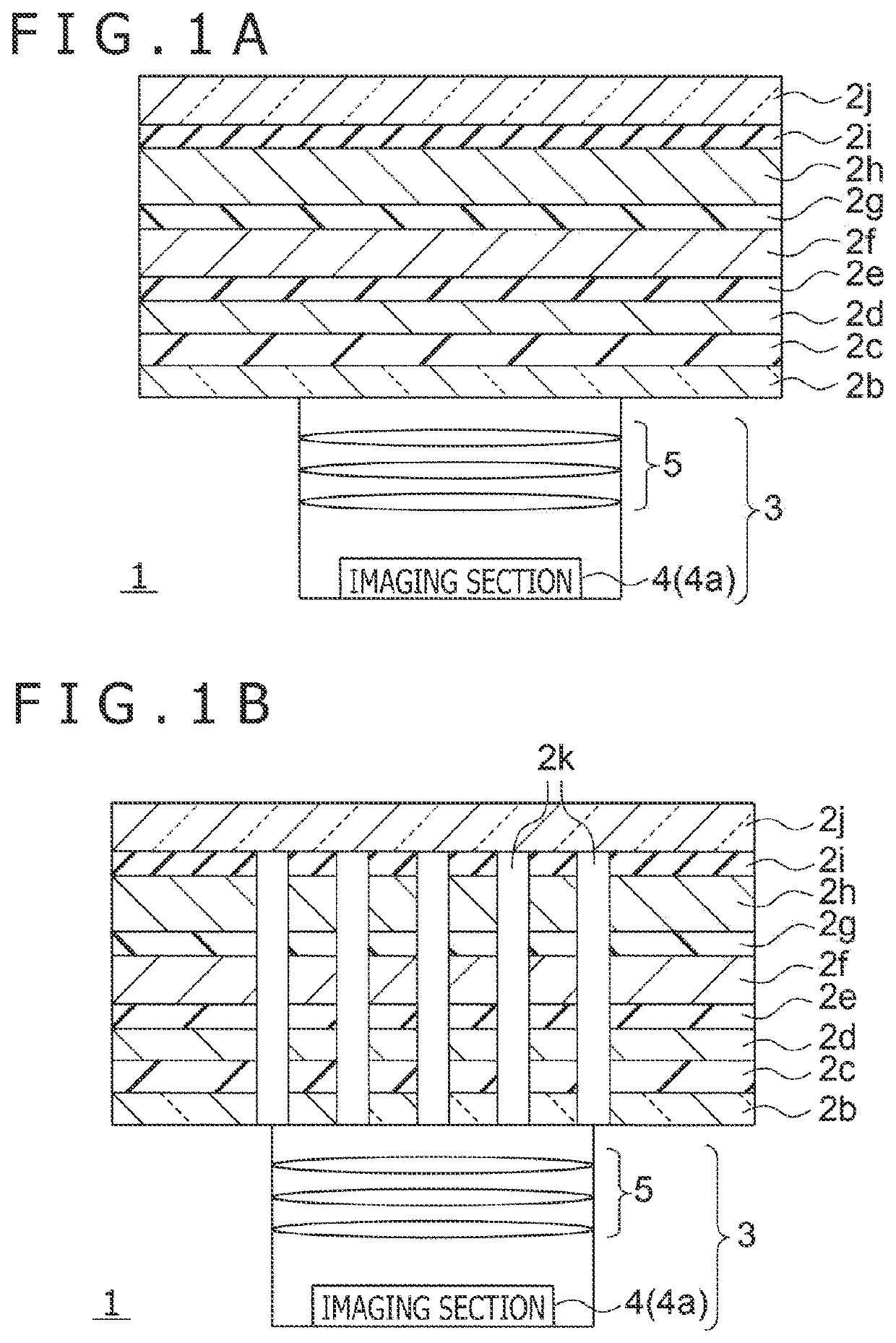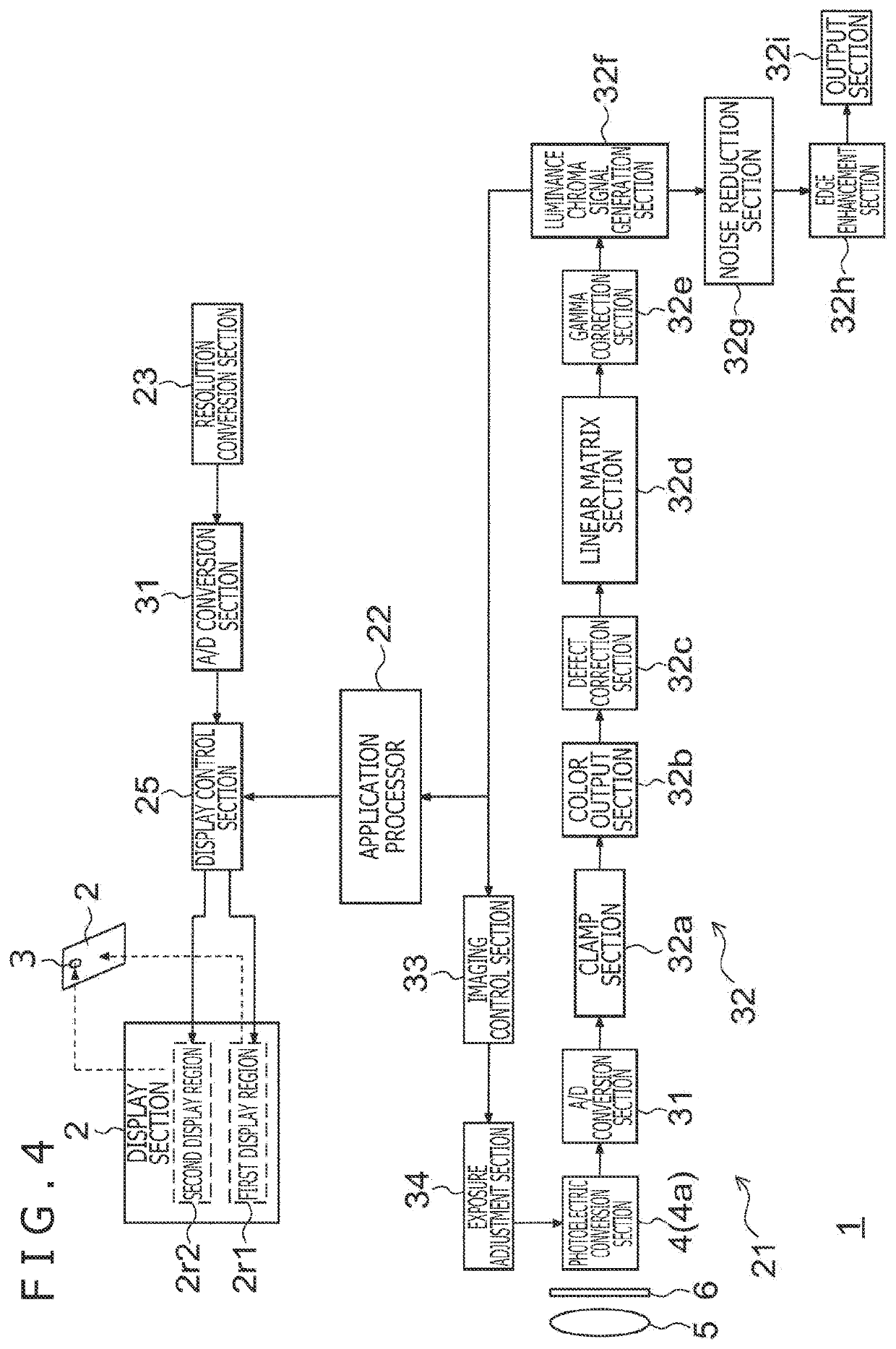Electronic equipment
- Summary
- Abstract
- Description
- Claims
- Application Information
AI Technical Summary
Benefits of technology
Problems solved by technology
Method used
Image
Examples
first embodiment
[0066]FIG. 1A and FIG. 1B are schematic cross-sectional views of electronic equipment 1 according to a first embodiment. The electronic equipment 1 in FIG. 1A is any electronic equipment 1 such as a smartphone, a cellular phone, a tablet, or a PC which includes both a display function and an image capturing function. The electronic equipment 1 in FIG. 1A includes a camera module (imaging section) disposed opposite to a display surface 1a of a display section 2. In such a manner, the electronic equipment 1 in FIG. 1A is provided with a camera module 3 on a rear side of the display surface 1a of the display section 2. Thus, the camera module 3 captures images through the display section 2.
[0067]FIG. 2(a) is a schematic diagram of the appearance of the electronic equipment 1 in FIG. 1A, and FIG. 2(b) is a cross-sectional view of the electronic equipment 1 taken in the direction of line A-A in FIG. 2(a). In an example in FIG. 2(a), the display surface 1a approximately spans the external...
second embodiment
[0096]When the frame rate of the display section 2 is reduced during activation of the camera module 3 as in the first embodiment, human eyes perceive the display to be darker than the normal display because the eyes sense brightness according to an averaged luminance. Thus, in a second embodiment, the luminance value of pixel data is increased when the camera module 3 is activated.
[0097]The electronic equipment 1 according to the second embodiment has an internal configuration similar to that in FIG. 4. FIG. 7 is a flowchart depicting processing operations of the electronic equipment 1 according to the second embodiment. Differences from the flowchart in FIG. 5 will mainly be described below. In FIG. 7, in a case where the camera module 3 has not been activated (NO in step S11), around the time of performing processing for selecting the normal frame rate (step S12), a normal luminance value is set (step S13). The normal luminance value means performing display with the original lum...
third embodiment
[0103]A third embodiment not only reduces the frame rate but also controls the display pixel density when the camera module 3 is activated. The electronic equipment 1 according to the third embodiment has an internal configuration similar to that in FIG. 4.
[0104]FIG. 9 is a flowchart depicting processing operations of the electronic equipment 1 according to the third embodiment. Differences from FIG. 7 will mainly be described below. Processing in steps S21 to S24 is similar to that in steps S11 to S14 in FIG. 7.
[0105]In a case where the camera module 3 is activated, the frame rate and the display pixel density are set (step S25). In this regard, the low frame rate, which is lower than the normal frame rate, is set. Further, for the display pixel density, set is a display pixel density that is lower than the display pixel density set in a case where the camera module 3 is not activated. As a more specific example, in a case where the camera module 3 is activated, every other horizon...
PUM
 Login to View More
Login to View More Abstract
Description
Claims
Application Information
 Login to View More
Login to View More - R&D
- Intellectual Property
- Life Sciences
- Materials
- Tech Scout
- Unparalleled Data Quality
- Higher Quality Content
- 60% Fewer Hallucinations
Browse by: Latest US Patents, China's latest patents, Technical Efficacy Thesaurus, Application Domain, Technology Topic, Popular Technical Reports.
© 2025 PatSnap. All rights reserved.Legal|Privacy policy|Modern Slavery Act Transparency Statement|Sitemap|About US| Contact US: help@patsnap.com



